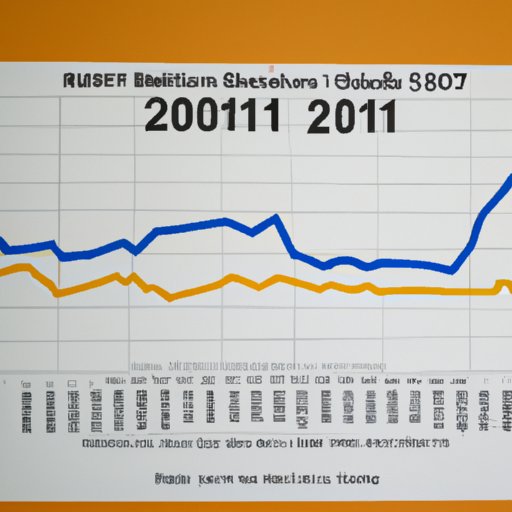Introduction
Bitcoin is the world’s first decentralized digital currency and was launched in 2009. It uses peer-to-peer technology to facilitate transactions and operates independently of any central bank or government. In 2011, Bitcoin had begun to gain traction in the cryptocurrency market and its value began to fluctuate.
At the time, the crypto market was still relatively small and volatile. Bitcoin was the only major player in the market and its value was largely determined by speculation. This made it difficult to predict the future of Bitcoin and its potential growth.
An Overview of Bitcoin Prices in 2011
When Bitcoin was first released in 2009, its initial price was just a few cents per coin. By early 2011, the price had started to rise and peaked at around $1.00 USD. This was a significant increase from its initial price and signified the growing interest in Bitcoin and other cryptocurrencies.
Throughout the year, Bitcoin prices continued to fluctuate due to a number of factors. These included news events, regulatory changes, and the increasing adoption of Bitcoin by merchants and consumers. As the year progressed, Bitcoin’s price continued to rise, reaching a peak of over $30 USD in June 2011.

A Look at the Rise and Fall of Bitcoin Prices in 2011
As Bitcoin’s popularity grew, so did its price. In June 2011, the price of Bitcoin reached an all-time high of $31.91 USD. This was followed by a sharp decline in the second half of the year, resulting in a low of just $2.00 USD in November. The price then slowly began to recover, closing out the year at around $4.00 USD.
The overall trend of Bitcoin prices in 2011 was one of fluctuations. The price rose steadily until June, before experiencing a sharp decline in the latter half of the year. This was largely driven by a combination of factors, including speculation, news events, and regulatory changes.
The Impact of 2011’s Bitcoin Prices on the Cryptocurrency Market
The fluctuations in Bitcoin’s price had a direct impact on the rest of the cryptocurrency market. As Bitcoin’s price rose, other cryptocurrencies began to emerge as investors sought to capitalize on the increasing demand for digital currencies. This led to the emergence of several new altcoins, such as Litecoin, Namecoin, and Peercoin.
The fluctuations in Bitcoin’s price also had an impact on trading platforms and exchanges. As the price rose, more traders entered the market, leading to an increase in trading volume. This spurred the development of new trading platforms and exchanges, such as Coinbase and Kraken.
Analyzing Bitcoin’s Price Fluctuations in 2011
The price of Bitcoin experienced significant volatility in 2011. This was mainly due to speculation, news events, and regulatory changes. Speculation played a large role, as investors sought to capitalize on the increasing demand for Bitcoin. News events, such as the collapse of Mt. Gox, also caused the price to fluctuate. Finally, regulatory changes, such as the banning of Bitcoin in China, also had an impact on the price.
In addition to these factors, the limited supply of Bitcoin also contributed to the volatility of its price. As demand for Bitcoin increased, the supply could not keep up, resulting in a rapid increase in its price. This created a bubble that eventually burst, resulting in the sharp decline in Bitcoin’s price in the second half of 2011.
Conclusion
The price of Bitcoin experienced significant volatility in 2011. This was mainly due to speculation, news events, and regulatory changes. As the year progressed, the price of Bitcoin rose steadily until June, when it reached an all-time high of $31.91 USD. After this, the price declined sharply, falling to a low of just $2.00 USD in November. The price then slowly recovered, closing out the year at around $4.00 USD.
The fluctuations in Bitcoin’s price had a direct impact on the rest of the cryptocurrency market. As Bitcoin’s price rose, other cryptocurrencies began to emerge and trading platforms and exchanges saw an increase in activity. Despite the volatility, Bitcoin’s price in 2011 laid the groundwork for the explosive growth of the crypto market in the years that followed.
(Note: Is this article not meeting your expectations? Do you have knowledge or insights to share? Unlock new opportunities and expand your reach by joining our authors team. Click Registration to join us and share your expertise with our readers.)
